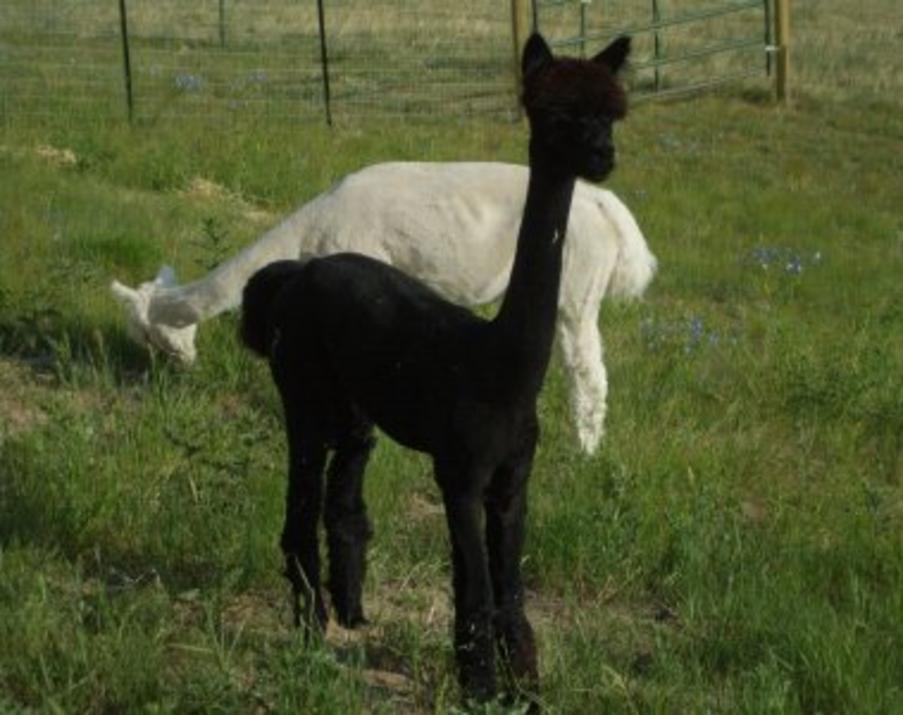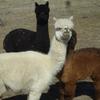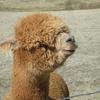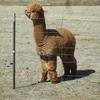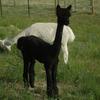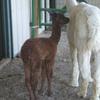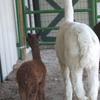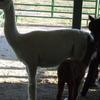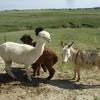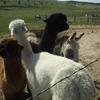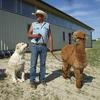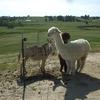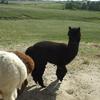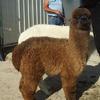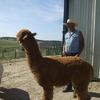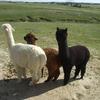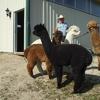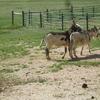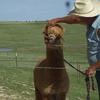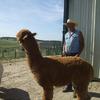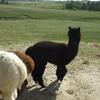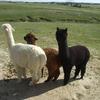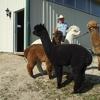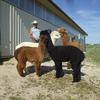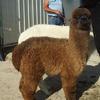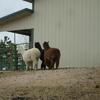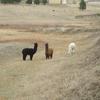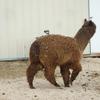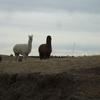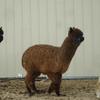 | ||||
THE IDEAL ALPACA: Suri and Huacaya
An ideal alpaca's look begins with the head, a dense top knot, and well-covered cheeks converging with the wool cap to form a close V at the eyes, which are brown. The ears are shaped like an arrowhead and erect. The muzzle is soft and wedge shaped. The jaw should fit together correctly, with the lower incisors meeting the upper dental pad. The head and neck make up about one-third of an alpaca's height, the body makes up one-third, as do the legs. The neck connects to the shoulder at approximately a 45° angle to the back, which is straight, dropping off a bit at the tail. When the alpaca is alert, the neck and back form almost a 90° angle with the head slightly forward. The perfect alpaca has a squared off appearance, with four strong legs setting squarely under it, giving it a graceful stance which translates into a fluid gait. The ideal alpaca has a soft, dense fleece, which is completed with abundant coverage down the legs.
The alpaca's head is a window into its quality and type: both huacaya and suri. The head of the ideal suri should exhibit well-covered cheeks and a bearded chin. The suri's fleece should begin independently locking at the forehead and continue uniformly down the neck, across the body and down the legs, finishing at the toes. The head of the ideal huacaya should exhibit a dense top knot which is crimpy. The cheeks should be well covered, and the bridge of the nose, clean. The crimp in the top knot should continue down the neck, across the blanket, and into the tail, finishing down the belly and legs.
The stars of any herd will catch your eye with an alert, erect appearance. Their fleece opens into well-organized locks or staples of soft, bright, and lustrous fleece, which handles like silk or cashmere. Above all, an ideal alpaca will never be mistaken for a llama.
 | ||||||
RT Camelot Ranch Alpacas
THE IDEAL HUACAYA FLEECE
The ideal huacaya's fleece should be: fine, dense, uniform, and grow perpendicular to the skin. The fleece, which grows from individual follicles in the skin, should be made up of defined staples of crimpy "bundled" fleece. These bundles should organize themselves into staples which create a dense presentation across the animal. The huacaya alpaca should be well covered with a soft, uniform fleece, except on the ears and the bridge of the nose of mature animals. The muzzle and ears should be soft to the touch. The elite alpaca has a well-defined crimp in their top knot, which continues down the neck, into the blanket the belly, and on to the tail. There should be very little medulation. The fleece should be well-nourished, exhibit a brightness or sheen, and be void of dull, dry, chalky fiber. The ideal huacaya will produce fleece as soft and as fine as cashmere. Huacaya alpaca is spun into luxury garments that can be worn close to the skin.
Study the pictures of the suri and huacaya alpacas that appear in this journal. Examine the pictures of their fleeces. Burn these images on your mind and make them part of your quest when you search for or work to breed the ideal alpaca. Always remember that an alpaca is valuable for both, its fleece and its ability to produce excellence in its progeny.
Proud members of the ARI!
Listen to some music while watching the "Woolly" Alpacas!
Here is a very nice looking young male, born 8/22/2011. Not registered, but could be. Halter trained and friendly, he would be a great pet or has potential to be a herdsire someday. Dam: Miss Chilali, white with great genetics, Sire: Tickity Boo Dino, black and has produced many ribbon winners.
